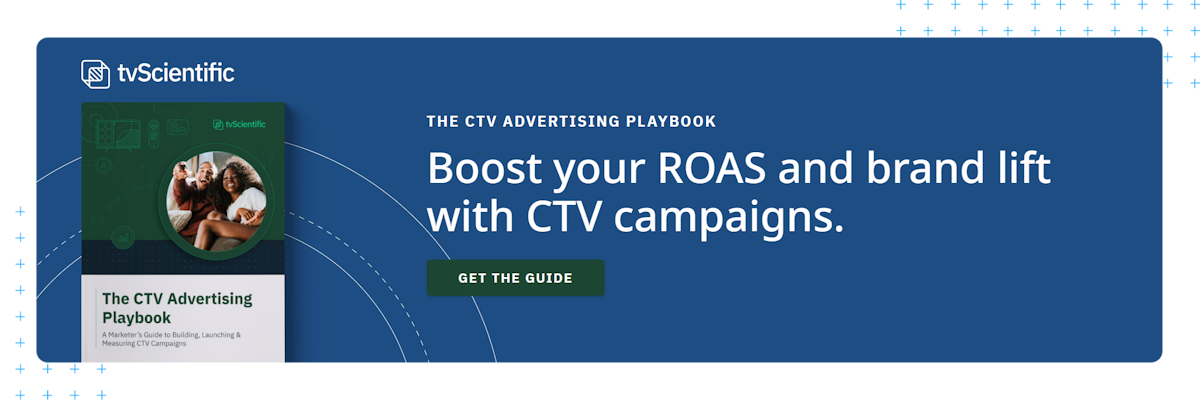AVOD and ad-based streaming models offer new ways for advertisers to reach their target audiences.
As demand for streaming content grows, AVOD monetization models will increasingly appeal to brands and content creators
What is AVOD, or Advertising Video On Demand? This streaming service model allows viewers to watch content for free in exchange for ad breaks. AVOD offers an alternative to traditional VOD subscriptions by serving video ads directly from advertisers, publishing ads to other OTT TV apps, and integrating ad-feeds from leading video ad networks. For many premium streaming services, AVOD serves as an entry-level tier to SVOD subscriptions.
AVOD’s model offers a way for viewers to access a variety of content without the financial commitment of a monthly subscription, helping them decrease entertainment bills. As a result, AVOD continues to gain popularity and traction in the streaming industry. As consumer demand for ad-supported streaming video options rises, AVOD’s meaning in media and entertainment will continue to grow.
Dig deeper into video on demand with our free guide, AVOD vs SVOD vs TVOD: Everything a Marketer Needs to Know.
How Does AVOD Work?
Users can register for an AVOD platform and access content through their browser, smartphone, or OTT (Over-The-Top) apps. Services like Hulu, Roku, and Tubi use this model to deliver a variety of movies, shows, and other video content. An AVOD channel generates advertising revenue by serving ads to users while they stream content. Advertisers pay AVOD platforms to reach a target audience, and this revenue is distributed between content creators and platforms.
What Does AVOD Mean For Subscriber Models?
Unlike some Subscription Video On Demand (SVOD) or Transaction Video On Demand (TVOD) models, AVOD platforms don't require users to pay for access. Some SVOD platforms offer services at a reduced price and make up the difference in revenue with ads using a hybrid monetization model. The AVOD model has gained popularity due to its accessibility and the growing acceptance of ad-supported content.
As the AVOD market continues to grow, ad spend on these platforms is also increasing, making it an attractive option for advertisers and content creators alike.
Benefits of AVOD
- Free Content: One of the main advantages of AVOD is that it provides viewers with access to a wide range of content without the need for a subscription or payment.
- Increased Accessibility: AVOD platforms make it easier for audiences to access content, as users can start watching content immediately.
- Diverse Revenue Streams: AVOD platforms can generate revenue not only from advertising but also from partnerships and sponsored content, contributing to their financial stability.
Challenges of AVOD
- Ad Interruptions: Viewers using AVOD platforms may experience frequent ad interruptions during their viewing experience, which can disrupt the flow of content.
- Limited Content Choices: Since AVOD platforms rely on advertising for revenue, they may have a more limited selection of content compared to subscription-based services.
- Privacy Concerns: Users of AVOD platforms may be subject to targeted advertising and data collection, raising privacy concerns for some viewers.
AVOD Market Size and Its Growth
The AVOD market is currently experiencing significant growth, with a size of $28.09 billion in 2023 and expected to reach $72.1 billion by 2027. This growth can be attributed to several factors such as the increasing demand for free and accessible streaming content, the expansion of digital advertising, and the rise of online content creators.
Advancements in streaming technology, including the development of higher-quality video and audio streaming capabilities, have made it easier for consumers to access and enjoy AVOD services. Additionally, the increased usage of smartphones and other connected devices has facilitated the widespread adoption of AVOD platforms, as consumers can now easily access streaming content on the go.
Moreover, the growth of online content creation has also fueled the expansion of the AVOD market, as more creators are producing original and engaging content for platforms that rely on ad-based revenue models. These factors combined are contributing to the robust growth of the AVOD market, making it a promising sector within the digital media landscape.
When to Monetize AVOD
AVOD can be a useful revenue stream for brands and content creators alike. AVOD is particularly suitable for brands with mainstream appeal that can attract a large audience for advertisers. This can include popular TV shows, movies, and user-generated content.
For content creators, AVOD can provide a steady income as they receive a share of the advertising revenue generated from their content. This can be particularly beneficial for smaller creators who may not have as large a following for subscription-based services. However, it is important to consider the potential impact on subscription-based services, as viewers may be less inclined to pay for content if they can access it for free with ads.
AVOD is also growing in importance in the OTT marketplace, as advertisers are increasingly looking for opportunities to reach audiences who are shifting to streaming platforms. This presents an opportunity for content creators to generate steady income through ad revenues, especially when targeting a global audience.
Constructing a Successful AVOD Strategy
As the popularity of advertising video on demand (AVOD) continues to grow, marketers need to understand the best practices for creating successful AVOD campaigns. With the surge in AVOD viewing due to the COVID-19 pandemic and the ongoing cord-cutting movement, it's crucial to reach this expanding audience and maximize ad revenue.
To effectively reach AVOD viewers, focus on targeted ad placements and relevant content. Understanding the evolving landscape of streaming consumption is key, as is identifying the specific interests and behaviors of AVOD audiences. By tailoring ad placement and content to align with viewer preferences, marketers can increase the effectiveness of their campaigns and drive higher engagement and ad revenue.
Audience Targeting
With the hyper-targeting capabilities of CTV advertising, advertisers can now reach very specific audiences based on demographics, interests, and behaviors. This allows for a more accurate and efficient way to reach the desired audience. However, maximizing reach can be challenging as it requires finding the right balance between reaching a specific audience and achieving a large-scale impact.
Retargeting
While awareness and impressions are easy to achieve, focusing on results and conversions is crucial. This can be achieved through retargeting strategies where advertisers reach viewers who previously interacted with their ads, making the conversion process more effective.
Attribution
Attribution is crucial in AVOD campaigns because it allows advertisers to understand which touchpoints or channels are driving conversions. This is essential for optimizing marketing strategies, allocating budget effectively, and ultimately driving higher ROI.
Make tvScientific Your CTV Partner
tvScientific was co-founded by senior executives with deep roots in search, programmatic advertising, digital media, and ad verification. We think scientifically, and our results are driven by a belief in one, simple formula: Trust = Data x Transparency x Control.
With powerful attribution capabilities, real-time reporting, automated optimization, and built-in, always-on testing, we believe that tvScientific provides the most robust, transparent, tailored CTV advertising platform. Once you see it for yourself, we know you will too. Request a demo today.







